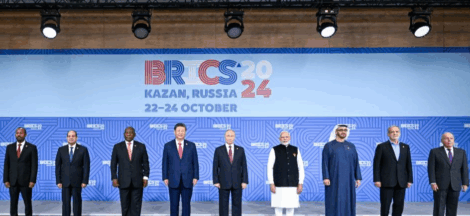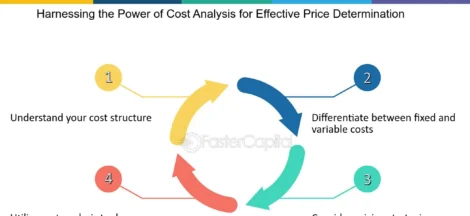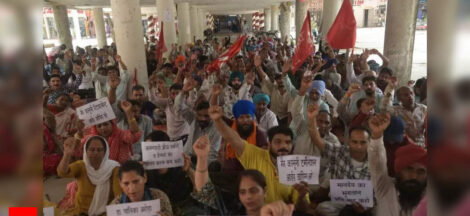By Anjan Roy
No one needs to state upfront that the Indian economy is not in the pink of health. So for the central bank the task is to make the best of a bad situation. The Reserve Bank of India has attempted doing exactly that in its monetary policy, announced on August 6.
The strategy followed by RBI has been to keep its overall framework stable, but then intervene in numerous micro manners to fine tune regulation to help segments of the economy under particular stress. Thus the Bank has left its monetary policy framework untouched by keeping all the key rates unchanged and let the lowering of policy rates to bite deeper.
The large infusion of liquidity ever since March this year into the system has encouraged transmission of the policy rate cuts. As a result, overall rate structure has come down and the debt markets have expanded. The RBI governor for example cited the fall in the spread for high grade private sector debts from their levels in March to July. The all across the sectors have been steep. Two operations, Operation Twist and TLTRO have both resulted in lower borrowing rates for corporates.
The Governor has claimed that lower rates have egged on corporate bonds issues running up to Rs2.09 lakh crore in the first quarter of the year. These developments in the financial markets have also helped one critical sector which keeps credit flowing in a large number of activities, namely the NBFCs. Ever since the problems with IL&FS, this sector has been worst hit and as a result housing to automobiles sales have all been affected adversely. This was well before even the pandemic reached the country.
Of these various measures announced on Thursday to fight the adverse impact of the pandemic on the Indian economy, three deserve particular mention. The basic strategy is to infuse the system with liquidity and keep the cog wheels running. A credit freeze at this point is the biggest worry for the RBI, it seems.
Towards this aim, the RBI has diluted norms to help stressed accounts from becoming categorised as bad debts, introduced changed reckoning standards to encourage flow of resources into areas which are somewhat funds starved and a few other such measures. Thus for example borrowers who were not in default and regularly paying their dues to banks in March would have turned defaulters after covid 19 episode. Now changed norms and practices should ensure flow of credit to such borrowers.
The governor’s announcement of the additional measures were like the what used to be part of the monetary policy folklore of an earlier times — selective credit control measures for different sectors of the economy. These have been long discontinued as such, though some small measure of such selectivity used to be introduced occasionally. But the usefulness of selective credit measures for beleaguered sectors as such might prove to be once again useful.
There would of course be two principal questions whether these steps are adequate in the current context of a huge shift in parameters following the covid 19 wave. There would of course be questions on the impact of such liquidity enhancement on the overall price prospect.
Since the supply side disruptions have been widespread and these have yet to be overcome, shortfalls and rigidities in supplies cannot be ruled. The manufacturing sector has been particularly hit and the latest data shows further deceleration of the manufacturing sector after a modest recovery in the earlier month. The PMI index stood at 46 for July against 47.9 in June. PMI below 50 indicates contraction. Sharp deceleration in production of the manufacturing sector could create temporary shortages and some price spurt.
With such disruptions, RBI as such admits the upside risks to the price situation. However, two points are to be taken into account. The hit that the economy has suffered and the consequent drop in income generation, demand would remain depressed. In some ways the threat appears to be one of falling prices in some sectors rather than shooting ones.
Secondly, the near normal rainfall this year and good farm prospects in the following months have promises for stable food prices. Some outliers of course cannot be ruled out that occasional spurts in vegetable prices are unavoidable. Additionally, softer trends in global oil prices should further give some comfort for the prices situation.
The other question that will surely be raised in the current context is whether RBI should have further cut interest rates. Indeed, expectation for a further aggressive action was building up with various segments of the financial sector arguing that in these unprecedented time RBI must leave caution behind and do something spectacular to restore confidence. After all, a pandemic of this order does not happen very other day and such extraordinary times demand extraordinary interventions.
It stands to reason that a very hyped up monetary policy can be counter-productive at this stage. Already, RBI is undertaking open market operations and liquidity injections which are infusing some stimulus. Since the stimulus operation would be long drawn out, all ammunition should not be exhausted at this stage. For example, the government might see a deep drop in revenues and can resort to larger borrowings from the RBI. It must prepare for these eventualities in the coming months. It will be a critical play between funding deficits and maintaining price stability at later stages of the covid crisis. (IPA Service)




 New Education Policy: India’s Great Leap Backward
New Education Policy: India’s Great Leap Backward 